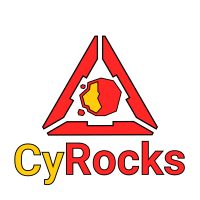Triple Actuating & Locking INterface (TALIN)
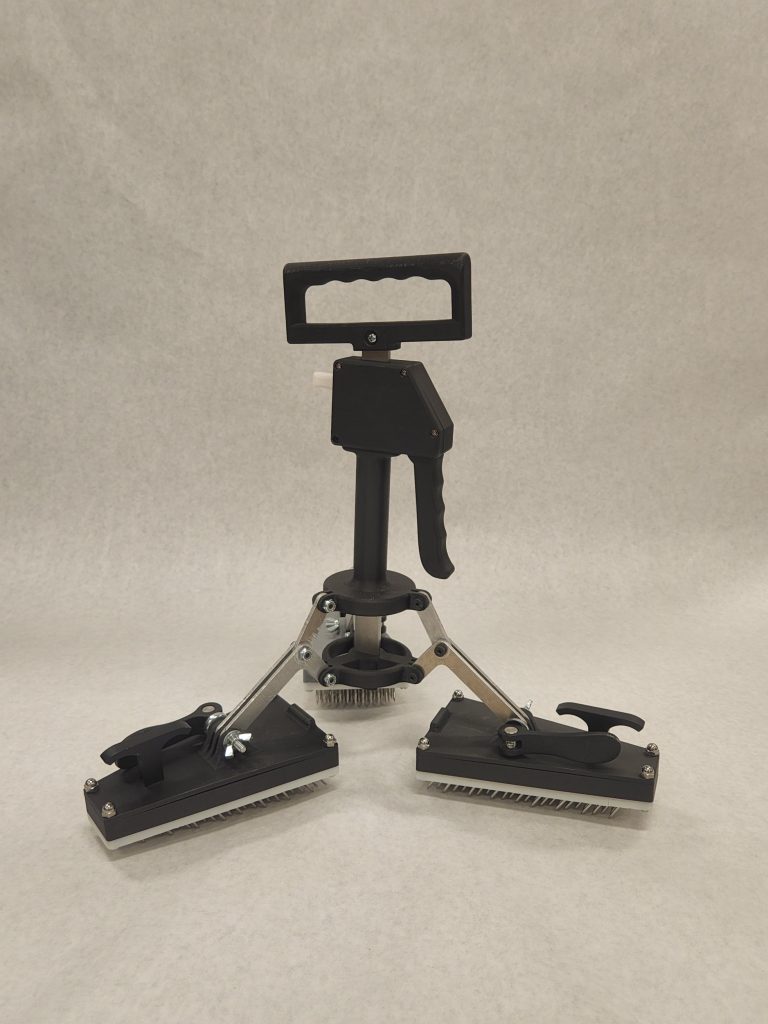

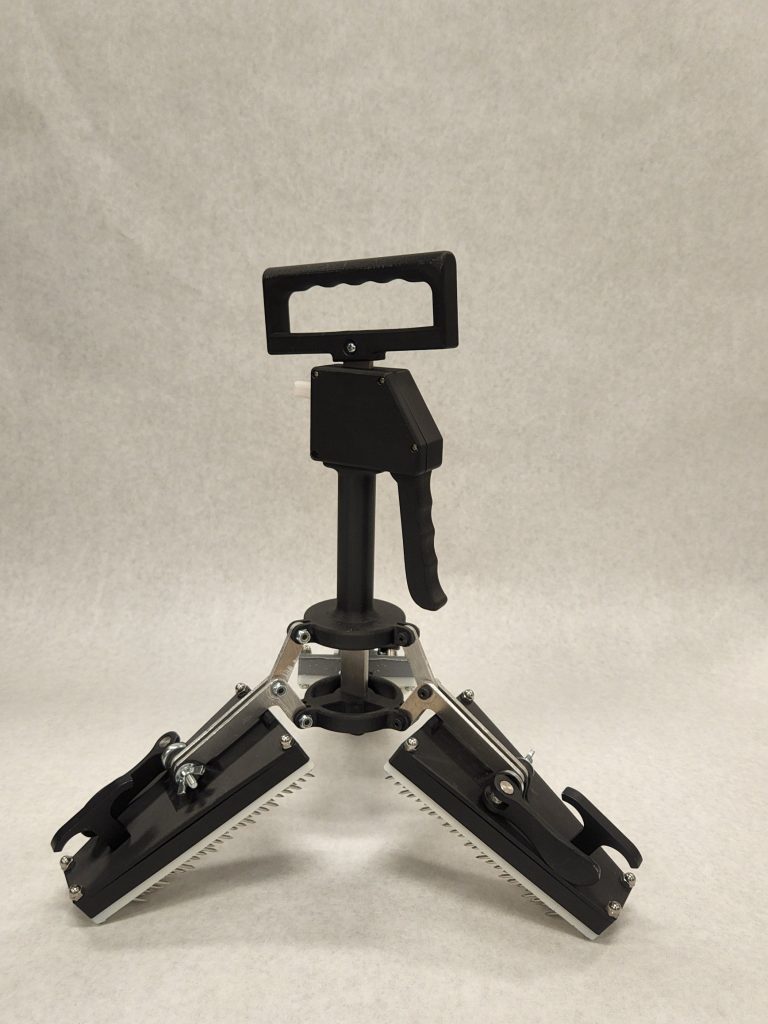
The Triple Actuating & Locking INterface (TALIN) is a design developed by Iowa State University engineering students. This device utilizes an impression-pin surface interface, which can securely anchor to a variety of rock surfaces. TALIN is designed to deploy quickly by the operator, ergonomic for use with extravehicular activity with EVA gloves, and provides a locking mechanism that allows the device to remain in its clamped position without the operator present. The user squeezes the locking mechanism handle to apply clamping force on the desired rock face to use the device. To release TALINS’s anchoring interfaces, the operator pushes upward on the release lever and slides the locking mechanism handle up the primary shaft to pull the device open. TALIN meets all of NASA’s challenge requirements, is safe to use, and will be manufactured for Neutral Buoyancy Lab testing. The device is engineered to assist Artemis astronauts in sample collection and is modular enough to be adapted to other anchoring purposes needed by NASA to advance space exploration.
TALIN has three main components: the surface mechanisms, locking mechanism, and claw. The claw mechanism is the main bar shaft that is the core of our device. The claw includes the grabbing mechanism towards the bottom of the device that is used to pick up rocks. The locking mechanism is attached to the bar shaft and includes housing for our trigger, spring, and release bar. The surface mechanisms hold the actuating pins and foam to act as the anchor to surfaces.
Our progress in pictures!

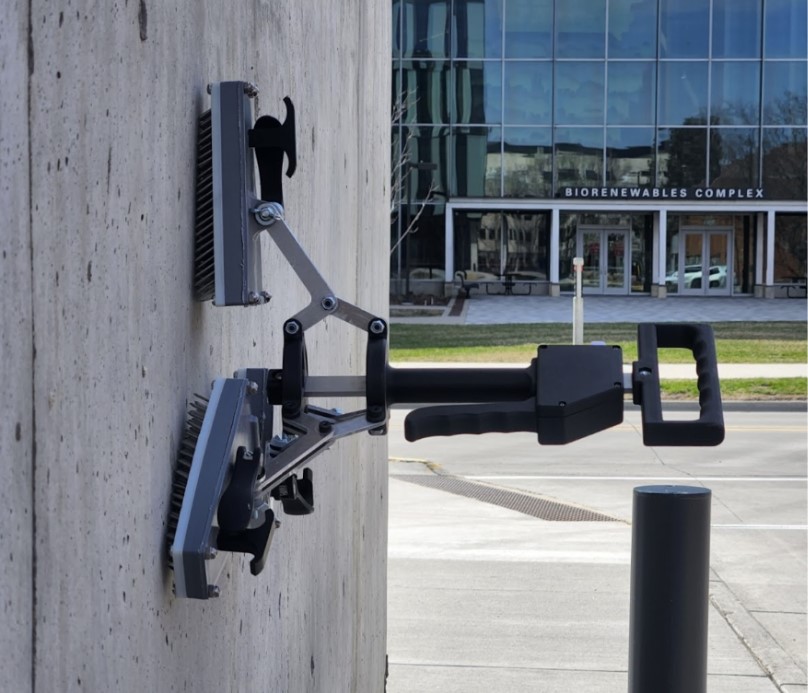
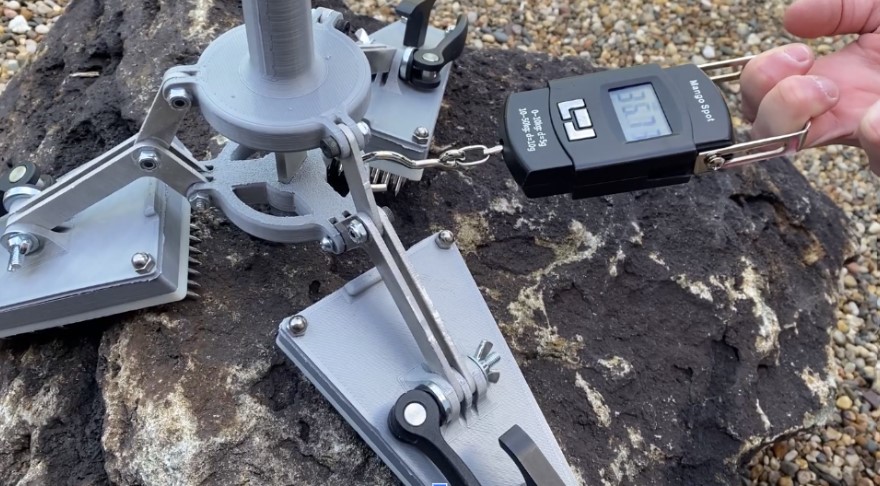
Progress made
Our team has worked very hard this last half of the semester making progress. Our main 3 categories of our progress would be in manufacturing, testing, and outreach. Our team had three STEM engagement outreach events. Two with the Women in Science and Engineering Go Further Conferences for female students interested in pursuing STEM. Followed by one Science Bound event for minority students interested in STEM. We led the students through an activity to design their own lunar reusable surface anchoring device focusing on the “grabbing” portion of the design. We have completed all of our testing at this point in the competition. We continuously conducted open air tests with large boulders outside measuring the anchoring force our device could provide. Then, we tested our device in the Iowa State Student Innovation Center’s Regolith Simulator. This allowed our team to see the functionality of our device in abrasive and dusty conditions that simulate the Moon’s lunar regolith. The team then tested TALIN in the Iowa State Neutral Buoyancy Lab. This was the most important test because not only will our device be tested underwater at NASA, but the pool also simulates a microgravity environment. Another important test we did was the EVA glove testing. This was to ensure the dexterity and ergonomics of our device. It is crucial that the astronaut is able to operate the device with gloved hands. Overall, the tests all proved to be successful and were milestones in our project. Each test helped our improve our device and find out new things as well.
Our manufacturing team has done lots of rapid prototyping and found the best design after many iterations. We decided on the surface mechanisms having foam, 30 degrees angled pins We also added shoulder screws to the surface mechanisms that allows the surface mechanisms to lay completely in line with the surface when anchoring to a flat surface. The locking mechanism was redone to be more ergonomic and to prevent lunar regolith from tampering with our device. Our device endcap on the main bar shaft was also increased in width to provide more mechanical advantage and a secure tethering point for anchoring. Safety features to the device have also been added. Knobs were added to each of the surface mechanisms to allow the user to safely manually adjust the mechanisms if they are in an unwanted position. The safe zones on the device such as a trigger, handle, and knobs were painted yellow to let the divers know where they can safely place their hands.
Reflection
Our team, like all others, has faced numerous challenges while facing this real life engineering issue. A project challenge we had was finding out that the foam in the surface mechanisms did not work well in the cold weather. Our device would provide very little clamping force when we tested outside in cold weather due to the foam getting stiff. This presented a challenge of not being able to do outdoor testing when it was cold outside. To solve this, we did our indoor testing in the Neutral Buoyancy Lab (NBL) and regolith chamber while it was cold and saved the outdoor testing for when it warmer up outside. This does not present any real issue to the effectiveness of our device when it will be tested at the NBL at Johnson Space Center. The NBL is a pool heated to 88-90 degrees F, so the foam will work well in the warm water.
It doesn’t stop here though! Even though the Micro-G NExT competition is a year long competition, CyRocks is hoping to extend that. We believe our device is robust and reliable enough for NASA to help the team continue the project. The team will be looking into more options of continuing the project after the semester ends and after testing week at the Johnson Space Center Neutral Buoyancy Lab in June.
